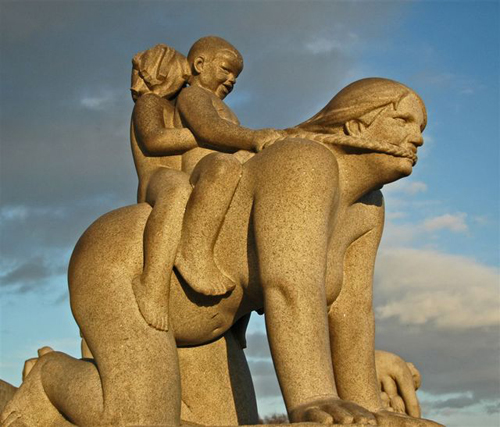
¿Por qué nunca he estado a Noruega, Me pregunto como puedo ver las imágenes impresionantes de este maravilloso país en la búsqueda de Google. Me Enviar a un amigo, Experto noruego y talentoso arquitecto, Maddy Vigeland, y pedirle que compartir conmigo una vista noruego para mi nuevo puesto la educación.
“Algunas cosas vienen a la mente,” Correos electrónicos Maddy espalda. “Además de esquí, los fiordos — kilómetros y kilómetros de paisaje dramático, salmón / lox, algo que se llama lutefisk. Entonces, canciones populares, la valentía de Leif Ericson, las aventuras de Thor Heyerdahl y su Kon-Tiki, la tristeza de pinturas de Edvard Munch, the bold and brutal sculptures of Gustav Vigeland, the outrageous integration of landscape with culture in Oslo’s new ballet and opera house by Snohetta architects. También, Liv Ullman, Sonje Henie, and perhaps the most distinguishing characteristic of all — the general agreement by all Norwegians on the way to live — focused on the quality of life.”
Thank you Maddy Vigeland. I’m hooked, but before I will commit to admitting I’m booked, allow me to share an educational view of Norway from my newer Norwegian friend, DR. Kirsten Immersive Are, distinguido profesor en la Universidad de Oslo Facultad de Educación.
¿Qué tipo de sistema educativo permitirá que un país tenga las habilidades de las personas necesarias para competir a nivel mundial?
Los últimos resultados de la evaluación a gran escala y el conocimiento revisa conclusiones de apoyo que la educación integral es más exitoso. En la educación integral, los estudiantes adquieren conocimientos y experiencia dentro demográficamente diversos ambientes de aprendizaje y se enfrentan a una multitud de expectativas que son a la vez cultivar y clasificación. Schools where students are grouped according to their abilities and aptitudes, are not as effective.
¿Qué opina de las pruebas estandarizadas?
Standardized testing informs policy makers and practitioners about some of the outcomes of education. Sin embargo, these tests are limited in scope in measuring the quality of teaching and learning in schools. Some assessment systems, like PISA, measure competencies of large populations, entre 4,500 y 10,000 15-16 year old students in each country. These tests might stimulate debates on what is the intellectual capability of students around the globe, but are not so good at measuring the content and methods of teaching.
Si la generalización es posible, what elements are missing from the current systems, such as critical thinking or other dimensions of human interest and intelligence?
The OECD studies concentrate on the human competencies that are needed in a learning society. This might lead to an orientation to productive learning and performance. Sin embargo, individual capacity as well as communication is also dependent on receptive skills, which develop through understanding, interpretation and reflection. Estas habilidades no son fáciles de medir, pero todavía son esenciales para convertirse en un ciudadano educado.
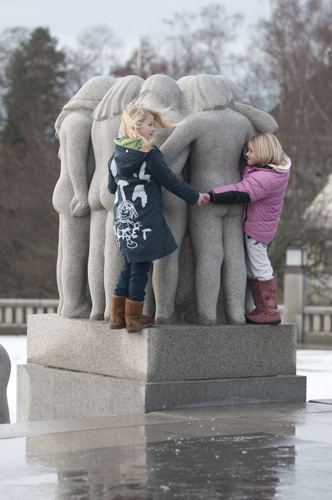
¿Qué se puede hacer para abordar mejor el bienestar emocional y el potencial intelectual del individuo, que parecen estar sufriendo bajo el sistema actual?
La carga global de líderes de la escuela es promover sistemas educativos que se basan en valores fundamentales como la dignidad humana y el respeto. Esto significa hacer hincapié en la responsabilidad en lugar de sistemas de rendición de cuentas y de evaluación de forma de acuerdo con los objetivos generales de la educación. Es importante que el sistema se encuentra en la escuela “dos piernas”: on a well designed curriculum and assessment for learning. For the moment, policy makers have been most concerned about one leg, to create expectations about performance through assessment and accountability systems. They forget that a well-working system depends on good structures, framed by systemic reform and the curriculum.
En Noruega, there is a tradition to formulate national curriculum guidelines which are broad based, yet provide a framework for what schooling is about. The guidelines are focused on central aims and subject matter which presuppose thoughtful teaching to be accomplished well. This approach is deliberative in character and guarantees that teaching manuals and prescriptions, whether they be scientific or political, are adjusted to deliberative practices in schools. Emphasis on deliberation will address both emotional well-being and the intellectual potential of the individual.
Desde una perspectiva más amplia, Qué definición de la excelencia educativa de su país tiene en cuenta la calidad de vida de los individuos y de la sociedad, incluyendo sus logros artísticos y culturales?
The most prominent example of this approach is the Finish educational system. En Finlandia, a new national curriculum will be implemented in a few years, giving priority to aesthetic subjects. The curriculum is comprehensive, yet students in Finland perform very well in large scale assessment, such as PISA, so a comprehensive curriculum might stimulate good results/outcomes. The General Curriculum in Norway describes a comprehensive curriculum as well and the integrated human being as one that is both cultivated and qualified. Here the tradition is to guarantee not only good results on national tests, but also a school system where students enjoy themselves and experience a good learning environment. I think joy and hard work must go hand in hand.
World Wisdom from Norway
Standardized tests do not measure the quality of teaching or the quality of learning in schools. There is too much emphasis in our education systems on assessment and accountability instead of on curriculum and responsibility. Dar a los maestros más margen de maniobra para adaptar las directrices a las necesidades de los estudiantes. La definición de la excelencia educativa en Noruega: un currículo completo, al igual que en Finlandia, donde el estudiante se convierte en tanto cultivada y cualificado. La alegría y el trabajo duro deben ir de la mano.
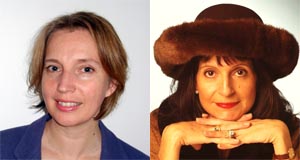
Photos courtesy of Norwegian Embassy.
En La Búsqueda Global para la Educación, unirse C. M. Rubin y reconocidos a nivel mundial los líderes de opinión entre ellos Sir Michael Barber (Reino Unido), DR. Leon Botstein (Estados Unidos), DR. Linda Darling-Hammond (Estados Unidos), DR. Madhav Chavan (India), El profesor Michael Fullan (Canada), El profesor Howard Gardner (Estados Unidos), Profesor Yvonne Hellman (Países Bajos), Profesor Kristin Helstad (Noruega), Profesor Rose Hipkins (Nueva Zelanda), Profesor Cornelia Hoogland (Canada), Señora. Chantal Kaufmann (Bélgica), Profesor Dominique Lafontaine (Bélgica), El profesor Hugh Lauder (Reino Unido), Profesor Ben Levin (Canada), Profesor Barry McGaw (Australia), Profesor R. Natarajan (India), Sridhar Rajagopalan (India), Sir Ken Robinson (Reino Unido), Profesor Pasi Sahlberg (Finlandia), Andreas Schleicher (PISA, OCDE), DR. David Shaffer (Estados Unidos), DR. Kirsten Immersive Are (Noruega), Canciller Stephen Spahn (Estados Unidos), Yves Theze (Lycee Francais EE.UU.), Profesor Charles Ungerleider (Canada), Profesor Tony Wagner (Estados Unidos), Profesor Dylan Wiliam (Reino Unido), Profesor Theo Wubbels (Países Bajos), El profesor Michael Young (Reino Unido), y el profesor Zhang Minxuan (De China) a medida que exploran las cuestiones de educación cuadro grande que todas las naciones se enfrentan hoy. La Búsqueda Global para la Educación Comunitaria Página
C. M. Rubin es el autor de dos ampliamente leído serie en línea por la que recibió un 2011 Premio Upton Sinclair, “La Búsqueda Global para la Educación” y “¿Cómo vamos a Leer?” Ella es también el autor de tres libros más vendidos, Incluido The Real Alice in Wonderland.
Siga C. M. Rubin en Twitter: www.twitter.com/@cmrubinworld


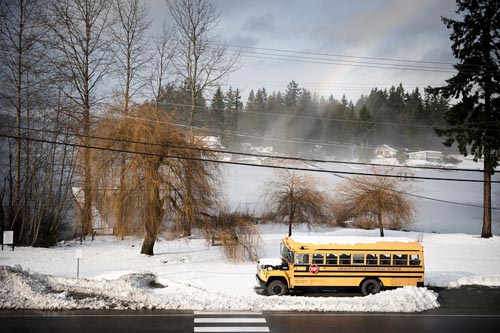
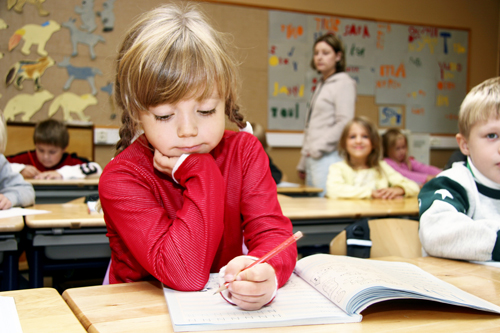

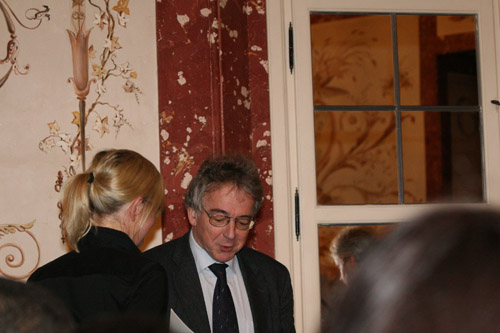
Comentarios recientes